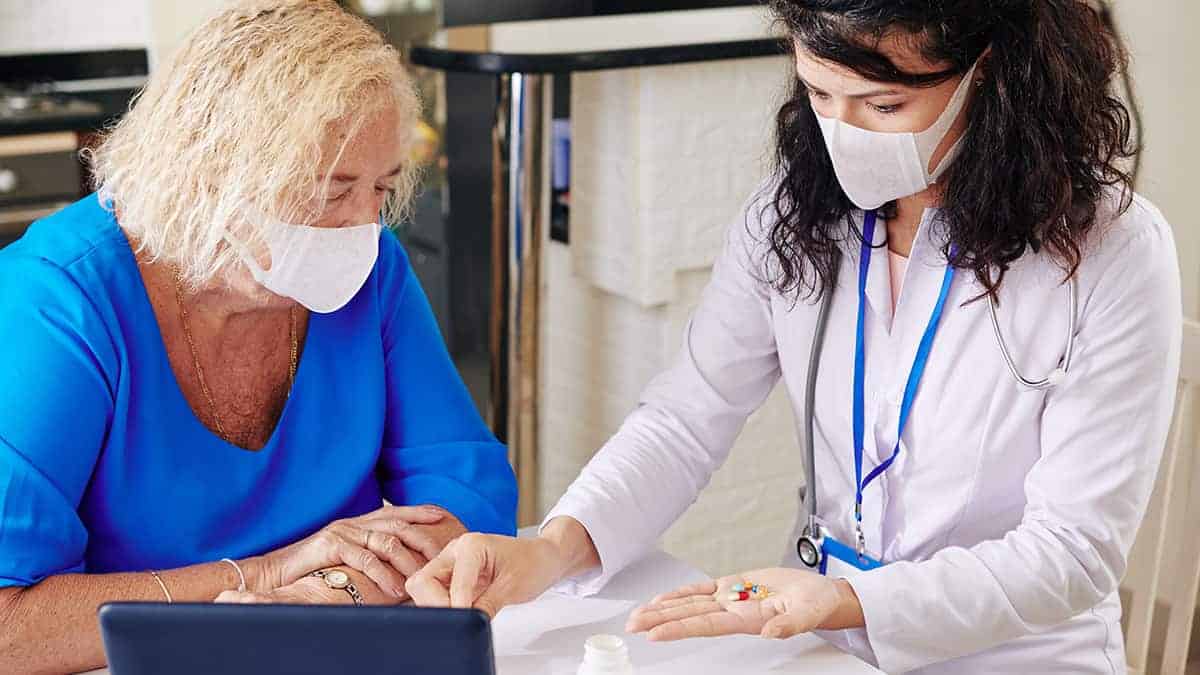
Benefits, Risks and Alternatives of Hormonal Replacement Therapy for Women
Hormone replacement therapy is a common way to treat symptoms of menopause. Hormones are complicated and come with great benefit as well as risk if not dosed appropriately. Follow-up with regard to clinical symptoms and lab testing is imperative for all patients who decide to initiate and take hormone therapy, so it is important for patients to discuss options with someone who is very experienced in this realm of hormone supplementation therapy. Women should talk to their doctors about which menopause treatment plans may be best based on their own personal symptoms.
Hormones are chemicals made by the body. They act as signals, allowing one part of the body to communicate with another part. Hormones are important for many functions in the body, such as growth, metabolism, mood, and sexual reproduction.
Estrogen and Progesterone
Different hormones are responsible for the development and health of male and female reproductive organs. In women, the reproductive hormones are estrogen and progesterone. They are made in the ovaries, and then released throughout the body, where they play important roles in:
- Creating female characteristics during puberty, such as breasts and pubic hair
- Regulating the menstrual cycle, fertility, and pregnancy
- Helping keep the heart working properly
- Supporting brain health and function
- Helping form bone and supporting bone strength
Menopause
As women get older, their bodies gradually stop producing hormones. Their menstrual cycles become more irregular, and eventually stop altogether. Once periods stop, women can no longer get pregnant. This process is known as menopause.
When people go through menopause, they often experience many symptoms that frequently last for seven years or more. One of the most common symptoms is a “hot flash,” in which someone suddenly feels hot, starts sweating, and develops redness or flushing on the chest, neck, or arms. (Most often this is at the level of the neck and above.) Other frequent symptoms include:
- Shorter or longer periods that occur more or less often
- Night sweats
- Sleeping problems
- Vaginal dryness
- Incontinence (leaking urine when sneezing, coughing, or running)
- Lower or higher sex drive
- Mood swings or anxiety
- Thinning hair
- Development of facial hair or sporadic hair on the chin
Women generally start transitioning into menopause in their mid- to late 40s. This transition generally lasts around four years. The period before menopause is termed “peri-menopause” and often starts to occur in a woman’s 30s and can last for more than a decade until menopause occurs. Women is said to have reached menopause when they haven’t had a period for 12 months in a row. Menopause occurs on average, at the age of 52, although it may happen several years earlier or later in many women.
Some women go through menopause at an earlier-than-normal age. It’s not always clear why women go through early menopause, although some possible reasons include smoking, genetics, chemotherapy or radiation treatments, autoimmune diseases, and surgical removal of the ovaries. Typically, women who go through early menopause have the same sorts of symptoms, but the symptoms are more likely to be severe.
HRT Benefits

Menopause symptoms will usually go away eventually on their own, without treatment. However, taking extra hormones as the body stops producing them can help reduce symptoms. Using medications that contain hormones is known as hormone replacement therapy, or HRT.
Women are often at higher risk of having other health problems after they go through menopause, and HRT can also help prevent some of these conditions. For example, a drop in estrogen levels typically leads to bone loss. Women often develop osteoporosis and have a higher risk of breaking bones once they go through menopause. HRT can help women maintain bone strength as they age and stop producing estrogen. HRT can also help post-menopausal women maintain healthy muscle function and improve skin health. Additionally, women younger than 60 who utilize HRT tend to live a little longer.
Using HRT can also help with cognition, or the dreaded “memory fog,” a common symptom experienced by women going through menopause.
People may also go through HRT when they transition away from the biological sex they are assigned at birth. Transgender women may take estrogen and/or progesterone along with testosterone blockers (aka: androgen blockers) as a way to develop more feminine features. HRT can have physical and psychological benefits and lead to greater quality of life for people who are transgender.
Types of HRT

- Estrogen-only medication, which may be called estradiol or conjugated estrogen. Estradiol is the strongest type of estrogen used. Brand names include Premarin, Estrace, and Estraderm, although the molecular structure of Premarin (equine estrogens from horse urine) is different from the female body, so it is not used as much anymore. Other estrogens used include estriol and combinations of the estrogens as well.
- Progestin-only medication, which may be taken along with estrogen-only drugs. One Brand name is Provera, which is medroxyprogesterone. There is a significant difference between progestin and progesterone as progestin is not bio-identical and has a different molecular structure than the female progesterone. To put it simply, medroxyprogesterone and any progestins are molecularly “cousins” of the naturally occurring progesterone found in the female body. In my opinion and in my practice, patients should use bio-identical HRT – this is the only type of hormone supplementation or replacement I recommend.
- Combination estrogen and progesterone medication, including Prempro, Climara Pro, and Activella.
- Combination estrogen and hormone medication, which consists of the drug Duavee. Duavee contains both estrogen and bazedoxifene, a medication that amplifies the effect of estrogen.
- Progesterone-only medication includes brand names such as Prometrium which are bio-identical, of the same molecular structure as the body’s own progesterone.
Ways of Taking HRT
- A pill or tablet taken by mouth, usually once per day.
- A patch worn on the skin, which is taken off and replaced every couple of days.
- Topical treatment, including creams, gels, sprays, or foams, which are often applied to the skin once per day in a specific location (such as the arm or leg)
- Injectable HRT.
- Hormone Pellets that are implanted underneath the skin every 3-6 months, depending on gender and serum (blood) levels.
Another form of HRT raises hormone levels only in the vagina. These products usually give off a lower dose of estrogen, and are effective at treating vaginal symptoms like dryness. However, they won’t work on symptoms that affect other parts of the body, such as hot flashes. Vaginal HRT medications may come in the form of a cream, ring, or vaginal tablet.
Each form has different pros and cons, and specific side effects may be more or less likely with each type of HRT. Please talk to your doctor about which form might work best for you and your specific needs and lifestyle.
Risks

Side Effects
Different HRT medications have different side effects. Some common side effects include headaches, stomach cramps, nausea or vomiting, tender breasts, hair loss, muscle spasms, dizziness, and throat or neck pain. If you are experiencing severe side effects from HRT, talk to your doctor about trying a different medication or stopping your use of the medication.
Health Risks
Taking hormones can lead to certain more serious side effects. Depending on a person’s health and family history, HRT may increase the chance of developing:
- Blood clots
- Heart attacks
- Stroke
- Dementia
For this reason, HRT is often not recommended for people with a history of bleeding problems, heart attacks, stroke, or liver disease. However, not every person is at high risk of developing these conditions. Talk to your doctor to determine whether these disorders are a concern for you.
Taking estrogen can also lead to an increased risk of getting cancer of the uterus. If a woman still has her uterus and has not gotten a hysterectomy, taking progesterone in addition to estrogen can reduce this risk. Additionally, taking progesterone helps protect the uterus and also reduces the risk for abnormal endometrial cell growth or proliferation which can cause the lining of the uterus to become thickened and cause vaginal bleeding.
Does HRT Lead to Cancer?
In the early 2000’s, two large clinical trials that included tens of thousands of women analyzed the long-term effects of HRT. These trials were the first to find that there may be a link between HRT and breast cancer. After following the women in the trial for more than a decade, researchers found that women who took a combination of estrogen and progestin (not progesterone) were more likely to develop breast cancer but I note that these studies were done on subjects that were not taking bio-identical hormones, which are the only type I recommend in my practice. However, women who took estrogen alone had a decreased cancer risk. Since these trials, many more studies have been published, and they have often come to conflicting conclusions, Cancer risk needs to be assessed on an individual basis with any patient who is considering taking HRT and this may be especially important for women with a personal or family history of the disease. Work with your healthcare provider to determine whether the benefits of HRT outweigh the risks.
How to Take Hormones Safely
In order to decrease health risks, some experts recommend taking hormones for the shortest amount of time needed, using the lowest dose that works. HRT carries less risk for younger women and for women who went into menopause within the last few years. However, now we have ample data to support taking HRT for many years and that doing so can help protect the brain, breast, and bones.
If you do decide to take hormones, there are things you can do to take them more safely. I always recommend that patients take an HRT that is the bio-identical form. Make sure to have regular doctor’s appointments where you can discuss both your menopause symptoms as well as any possible side effects from HRT. In particular, tell your healthcare provider if you experience any new bleeding problems. You can also ask your doctor about whether you need to be screened for certain health conditions, as people who take hormones may need to get mammograms or bone density tests more often than others. Finally, do not smoke while taking hormones, as this can lead to potentially dangerous blood clots.
Alternatives to HRT

Relaxation Techniques
Research has found that practices that lead to less stress and anxiety can help improve menopause symptoms. For example, mindfulness meditation can help women have fewer, less severe hot flashes, and help with symptoms related to sleep, mood, and muscle and joint pain. A clinical trial also found that hypnosis could make hot flashes occur 74% less often and be 80% less severe, although scientists don’t know exactly how this works.
Additionally, researchers have studied whether certain types of relaxing physical activities can help with menopause. Tai Chi is a mind-body exercise that involves meditation and relaxation. Studies have found that Tai Chi can help menopausal women have fewer hot flashes, stronger bones, and higher levels of antioxidants in their bodies. Additionally, yoga may help reduce hot flashes. Exercises that engage both the body and the mind might be a way to help treat menopause symptoms.
Herbal Supplements
Many herbal or natural supplements are often taken for menopause symptoms. However, many herbs don’t seem to actually work when they’re studied in clinical trials, or they have not been studied at all.
For example, women undergoing menopause commonly use evening primrose oil. One study found that this supplement could make hot flash symptoms slightly better, while another found that it had no effect. The use of red clover in menopause has also led to mixed results. However, there is some evidence that black cohosh can help treat menopause, especially when combined with St. John’s wort. More clinical trials need to be conducted in order to better determine which herbs are most helpful for treating menopause.
If you do decide to use herbal supplements, make sure your doctor knows. Just because a treatment is natural and comes from a plant doesn’t mean it’s completely safe. Evening primrose oil can lead to bleeding problems when combined with ginseng, and black cohosh may cause liver damage. Some herbal supplements can also have interactions with other drugs, leading to increased side effects.
Change Your Diet
Try tracking your hot flashes and keeping a food diary to see if you notice that certain food or drink makes your hot flashes worse. Caffeine, alcohol, and spicy foods may all act as triggers for hot flashes. Avoiding food and drinks in these categories may help your symptoms improve. Eating lots of fruits and vegetables and having meals at regular times throughout the day can also help you manage your symptoms. Additionally, some women find that eating soy products such as tofu or edamame may help treat menopause.
Manage Hot Flashes
Even if you can’t make your hot flashes disappear, you can make them more manageable. Wear light, breathable clothing, and dress in layers so that you can take off a jacket or sweater if you feel a hot flash coming on. Keep cold water and a fan close by at all times, in order to help cool yourself off if you start sweating. It may also be helpful to sleep with a fan by your bed. Finally, taking slow, deep breaths as a hot flash starts can help them go away more quickly.
Addressing Sexual Symptoms
Using a vaginal moisturizer can help relieve dryness. Additionally, you may want to try a water-based lubricant in order to make sex more comfortable. Kegel exercises may also help work out muscles in the vagina and lead to less urine leakage.
Keep Your Bones Healthy
Because bone density decreases after menopause, and bone breaks become more common, it’s important for women to think about bone health. Exercise and physical activity can keep bones strong as you age. Taking extra calcium or vitamin D can help, too. Calcium comes from foods containing dairy, such as milk and cheese, as well as from leafy green vegetables, salmon, and tofu. Vitamin D comes from getting sunlight. Both calcium and vitamin D can also be taken as supplements. Talk with your physician about making sure that your vitamin D levels are optimal.
Getting Better Sleep
Many women going through menopause have sleeping problems. Try getting better sleep through:
- Getting more physical activity during the day
- Avoiding eating or drinking alcohol before bed
- Drinking warm milk or tea before you sleep
- Turning off your phone and TV when it gets close to bedtime
- Avoiding naps during the day
- Talking to your healthcare provider about treating insomnia
Conclusion
Hormone replacement therapy may be right for some but unnecessary or risky for others. Your physician can help you figure out whether the benefits outweigh the risks based on your health and family medical history and can help guide you in the right direction regarding the benefits of hormone replacement therapy. Contact Dr. Brynna Connor to learn more.

